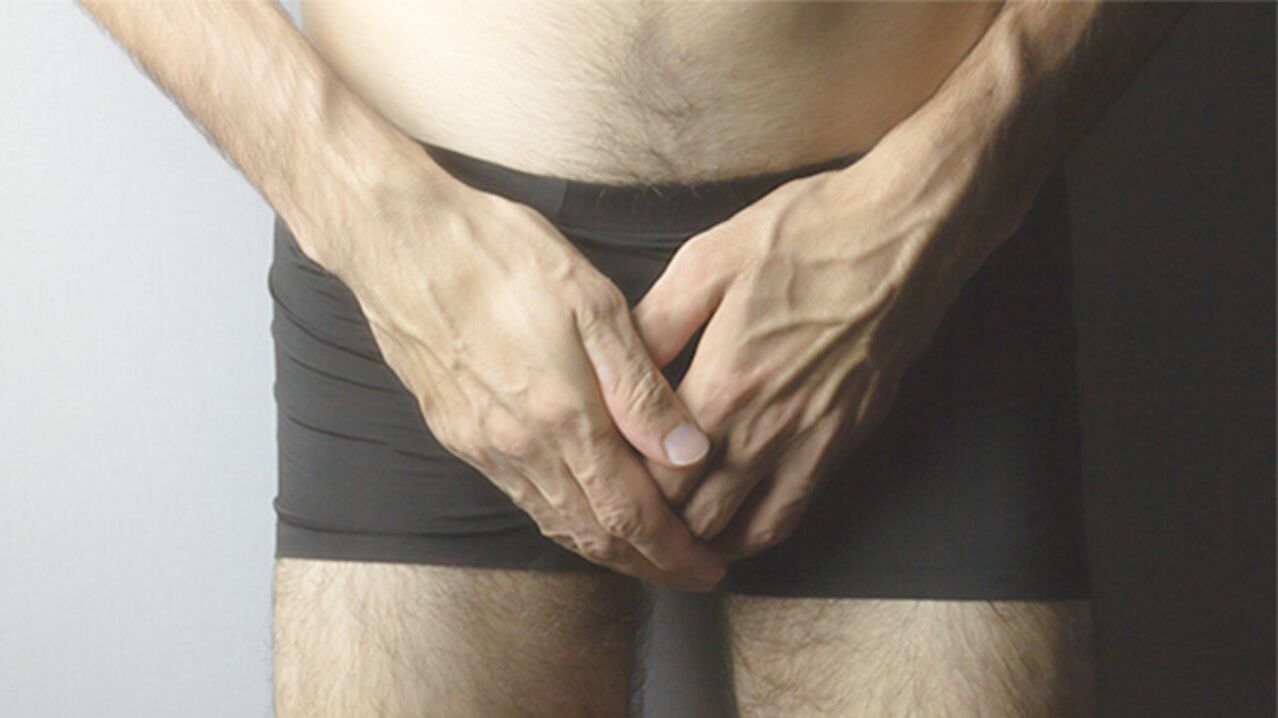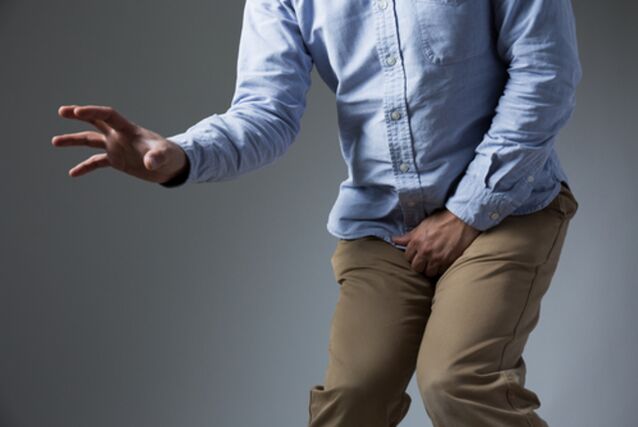
According to statistics, about 40% of men with symptoms of prostatitis do not seek medical help. At the same time, the consequences of this disease, including the risk of male infertility, are very serious. Find out the symptoms you should see your doctor and how to avoid getting sick.
What is prostatitis
Prostatitis is inflammation of the prostate or prostate, it is one of the most common "male" diseases. Prostatitis is very different, they can occur due to infection, no infection, insufficient or excessive sexual activity, and so on. This article will help you understand the basic nuances of the disease.
About 10% of men have symptoms of chronic prostatitis, but only about 60% of men seek medical help (Nickel JC et al. , 2001).
Prostatitis affects men of all ages, and its prevalence continues to increase. According to various sources, men under the age of 50 account for 65. 2% of patients, and the prevalence of the disease among men is 13. 2-35% (Lummus W. F. , 2001; Meares E. M. , 1990). According to other data, 8 to 35% of men between the ages of 20 and 40 suffer from prostatitis. In older men, the occurrence of benign prostatic hyperplasia (prostatic adenoma) "covers" the true situation because their symptoms are basically the same. Up to 65% of patients with adenoma undergo surgery for unrecognized prostatitis. (Nickel JC et al. , 2007). Given that inflammatory diseases of the reproductive organs are a common cause of male infertility, scientists talked about the threat to the country's reproductive health.
What is prostatitis
A simple classification into acute and chronic is not sufficient to characterize prostatitis, and the disease includes several syndromes with different clinical processes. Consider which diseases are separated according to modern classification methods (Krieger JN et al. , 1999).
The first category: acute bacterial prostatitis. . . Relatively rare species, accounting for only 5% of cases. It is the result of a urinary tract infection and develops against the background of predisposing factors (decreased urine outflow, reduced immunity). In 5% of cases, it will become chronic bacterial prostatitis.
Class II: Chronic bacterial prostatitis. . . This is also a rare disease, considered to be recurrent urinary tract infections, mainly in the prostate.
Category III: Chronic Prostatitis/Chronic Pelvic Pain Syndrome. . . Previously, this disease was called chronic non-bacterial prostatitis, and it accounted for 95% of all diagnosed prostatitis (Habermacher GM, 2006). Chronic pain syndrome is accompanied by a pathology characterized by urinary system pain without urinary tract infection. It does not include urethritis, cancer, urethral stricture, and damage to the bladder nervous system. Divided into categories IIIa and IIIb: signs of inflammation, no signs of inflammation. These signs are determined by the laboratory, mainly by the presence of white blood cells in urine or prostate secretions.
Category IV: asymptomatic inflammatory prostatitis. . . It was an accidental discovery when examining the patient. This disease is usually diagnosed when checking for male infertility or elevated levels of PSA markers in the blood. Since scientists have not yet formed a unified view of this type of disease, we have not considered this type of disease in detail (Nickel JC, 2011).
Symptoms of prostatitis
Symptoms of acute prostatitis
The disease has an acute attack, pain in the perineum, and an increase in body temperature. The desire to urinate is frequent (at least 5-7 times a night), and urination becomes painful and difficult. Urine was discharged intermittently, and there was no feeling of satisfaction due to urination. Blood may be found in the last part of the urine. Pain worsens during bowel movements. This is a serious illness and requires urgent help.
The complications of acute prostatitis are:
- Acute urine retention
- Prostatic abscess (formation of purulent lesions);
- Paraprostatitis (inflammation of the tissue around the gland, possibly caused by a breakthrough abscess);
- Paraprostatic phlebitis (inflammation of peripheral veins).

Chronic prostatitis symptoms
All types of chronic prostatitis (bacterial and chronic pelvic pain syndrome) are similar. The pictures of the disease vary greatly, and the symptoms that may occur at different levels of severity are listed below.
- pain:
- Pain or discomfort in a characteristic area (groin, upper groin, testicles, penis, lower back, abdomen, rectum);
- Pain when urinating or increased pain when urinating;
- Pain during or after ejaculation;
- Increased sensitivity of the perineal muscles;
- Neuropathic pain;
- Intestinal irritation pain.
- Urinary system symptoms:
- Lower urinary tract symptoms (LUTS) related to emptying (urgency, incontinence, rapid urination, urgency at night, pain during urination);
- LUTS related to obstruction (weak urine pressure, intermittent flow, need to push);
- Burning sensation in the urethra;
- Repeated urinary tract infections.
- Sexual dysfunction:
- Erectile dysfunction;
- Illegal ejaculation (premature ejaculation or delayed ejaculation, blood in the semen);
- Decreased libido.
- Psychosocial symptoms:
- anxiety;
- Frustrated;
- Cognitive and behavioral disorders;
- The quality of life has declined.
Men with chronic pelvic pain syndrome are more likely to show psychological stress and sexual dysfunction (A. Mehik, 2001).

If symptoms of prostatitis and chronic pelvic pain syndrome occur, you need to see a urologist or andrologist. If you have severe symptoms of acute prostatitis, you should seek emergency help to prevent urine retention and other complications.
Causes of prostatitis
Inflammation in the prostate develops under the influence of many factors. In the absence of predisposing factors, healthy glands have the potential to fight infection and inflammation. Decreased immunity, violation of prostate secretions, improper sexual behavior, difficulty in the flow of urine and deterioration of blood circulation in the pelvic organs all contribute to the onset of the disease. Other risk factors include cold weather, alcoholism and a sedentary lifestyle.
Acute prostatitis is a bacterial inflammation. The most common pathogens are Escherichia coli, Proteus, Pseudomonas aeruginosa, Enterobacter, etc. The disease develops when the infection develops as the urine is injected, the infection rises, and the rectal lymph or blood from other infected sites enters the glands. The sexual transmission of pathogens plays an important role.
Risk factors for acute bacterial prostatitis:
- Phimosis;
- Urinary tract infection;
- Acute epididymitis (inflammation of the epididymis);
- Unprotected anal sex;
- Bladder catheterization
- Surgery through the urethra;
- Prostate biopsy;
- Violation of the secretion and excretion of prostate fluid.
The risk factors and causes of chronic bacterial prostatitis are similar to those of acute bacterial prostatitis. The pathogens of genital infections are particularly important: trichomoniasis, chlamydia, ureaplasma, and mycoplasma.
Chronic pelvic pain syndrome is currently not considered a homogeneous disease; doctors find it difficult to pinpoint its main cause. Among these patients, only one-third of the patients had a biopsy, which showed inflammatory changes in the prostate. It is believed that the main role of its development is immune, neurological and endocrine diseases.
Scientists believe that the causes of the syndrome include:
- infection
- Autoimmune diseases;
- Chemical inflammation caused by urine entering;
- Immune system diseases;
- Drain urine into the prostate tube;
- Pelvic floor muscle pain caused by pathological tension;
- Trapped nerves;
- Psychological pressure.
Diagnosis of prostatitis
diagnosisAcute prostatitisIs based on:
- Complaint
- Physical examination
- Urine examination should include bacterial culture to identify pathogens.
In simple cases, imaging of the prostate is usually not required. If urine retention is severe and prostate abscess is suspected, a transrectal ultrasound (ultrasound) or computed tomography (CT) scan of the pelvis is performed. PSA testing is not recommended, because in acute diseases, its level will increase anyway. Due to the high risk of pain and complications, prostate biopsy is contraindicated.
Easy to diagnoseChronic prostatitisThe doctor used several special questionnaires to detail the history of the disease, changes in the quality of life, and detailed symptoms. During the examination, the doctor palpates the abdomen and performs a digital examination of the prostate (through the rectum) to assess the condition of the pelvic muscles. In most cases, the diagnosis is based on medical examinations and bacteriological and clinical examinations of urine or semen. The diagnostic criteria for chronic bacterial prostatitis is the history of repeated urinary tract infections, the secretion of semen or the increase in bacterial levels in prostatic fluid after prostate massage is ten times the bacterial level (Budía A; 2006).
If the analysis of prostate and urine secretions in the presence of symptoms of chronic prostatitis does not provide sufficient information, please conduct the following additional studies:
- 2 Glass samples (to determine the location of infection by urinalysis);
- 4 glass samples;
- Urine flow rate;
- Determination of residual urine;
- Cytological analysis of urine.

In the differential diagnosis (to exclude prostate stones, abscesses, cancer), the following tests are also used:
- Sow smears from the urethra;
- Screening for sexually transmitted diseases;
- PSA analysis;
- Urine flow method
- Cystoscopy
- Prostate biopsy;
- Retrograde urethral angiography
- Kidney ultrasound examination;
- Magnetic resonance imaging, computed tomography.
Treatment of prostatitis
Treatment of bacterial prostatitis
Ideally, antibiotic treatment should be based on bacteriological data. However, it is usually assumed that the most common pathogen is gut bacteria, which usually starts before the results are obtained. According to the European Urology Infection Treatment Guidelines, the drugs used to treat acute and chronic bacterial prostatitis are fluoroquinolones, macrolides, and tetracycline antibiotics. After identifying the pathogen, antibiotics can be replaced.
Acute bacterial prostatitis sometimes requires surgery. In the case of an abscess, the surgery is performed through the rectum or urethra. In the case of acute retention of urine, when it is impossible to pass the catheter through the urethra, a cystostomy will be performed and the catheter will be inserted through the abdominal wall above the pubic bone.
Other treatments for acute prostatitis include pain relief, fever, drinking plenty of fluids, and stool softeners. Alpha blockers are also used to improve urine flow. After treatment of acute prostatitis, patients should avoid sexual intercourse for a week.
Treatment of chronic prostatitis/chronic pelvic pain syndrome
As we have pointed out, the cause of this syndrome is difficult to pinpoint. Therefore, the choice of therapy is difficult. Usually, the doctor will start the treatment with 1-2 kinds of drugs, if the effect is not enough, the drugs can be changed. The European Guidelines for the Management of Chronic Pelvic Pain provide the following drugs and treatments:
- Alpha blockers can relax the bladder and prostate and significantly relieve symptoms.
- Antibiotics can also be prescribed because experience shows that they can be effective.
- Anti-inflammatory drugs can improve the quality of life and reduce pain.
- 5-α reductase inhibitors can relieve the symptoms of prostatitis.
- The effect of muscle relaxants is similar to that of alpha blockers.
- Phytotherapy. The bioflavonoid quercetin and several other drugs can relieve pain through anti-inflammatory and antioxidant properties.
In chronic pelvic pain syndrome, placebo helps to relieve symptoms by 30% (D. A. Shoskes, 1999)
Drug-free treatment:
- Prostate massage. It is carried out with fingers through the rectum. It is recommended 1-3 times a week for 3-4 weeks.
- Physical method:
- Electromagnetic therapy
- Microwave hyperthermia;
- Extracorporeal shock wave therapy.
- Surgical treatment includes endoscopic incision of the bladder neck, transurethral resection of the prostate, and even removal if other methods are ineffective. This treatment is rarely used.
- Psychotherapy. The deterioration of the quality of life and the poor attitude of patients to this situation requires the intervention of a psychologist.
prevention
caveatAcute prostatitisNeed to treat any urinary system diseases in time, remember to have a safe sex life and avoid genital infections. Part of the prevention should be performed by a doctor, without prescribing unnecessary invasive surgery (biopsy, cystoscopy) and a complete cure for urinary tract infections.

Key points to prevent chronic prostatitis:
- Personal hygiene. To prevent infection, keep private areas clean.
- physical activities. When sitting for a long time, the blood in the pelvic area will stagnate, which may cause inflammation of the prostate. You need to get up and take every opportunity. Stretching exercises and aerobic exercises can achieve good results. Among other things, physical exercise can reduce the anxiety usually associated with prostatitis.
- Normally engage in sexual activity according to age.
- liquid. You need to drink enough water to help flush bacteria out of the urethra.
- diet. It is recommended to limit the use of foods that stimulate the prostate: coffee, tea, carbonated drinks, spices, pickles, canned foods, fried foods and alcohol. The proportion of fruits and vegetables in the diet should be increased. These suggestions are also very important in the treatment of diseases.
- Maintain a healthy weight.
- Pressure control. For this, you can consult a specialist (psychotherapist) and learn how to relax.
- Safe sex can prevent infection.
- Avoid hypothermia.
- When dangerous symptoms appear, seek medical attention: painful urination, frequent urination, discomfort in the lower abdomen and perineum.



























